The answer is yes, but only because you exclude NaNs, by my reading of the IEEE-754 Standard. Normally the answer is no. The relevant chunk of the Standard reads as follows:
5.11 Details of comparison predicates
For every supported arithmetic format, it shall be possible to compare
one floating-point datum to another in that format (see 5.6.1).
Additionally, floating-point data represented in different formats
shall be comparable as long as the operands’ formats have the same
radix.
Four mutually exclusive relations are possible: less than, equal,
greater than, and unordered. The last case arises when at least one operand is NaN. Every NaN shall compare unordered with
everything, including itself. Comparisons shall ignore the sign of
zero (so +0 = −0). Infinite operands of the same sign shall compare
equal.
Languages define how the result of a comparison shall be delivered, in
one of two ways: either as a relation identifying one of the four
relations listed above, or as a true-false response to a predicate
that names the specific comparison desired.
Table 5.1, Table 5.2, and Table 5.3 exhibit twenty-two functionally
distinct useful predicates and negations with various ad-hoc and
traditional names and symbols. Each predicate is true if any of its
indicated relations is true. The relation “?” indicates an unordered
relation. Table 5.2 lists five unordered-signaling predicates and
their negations that cause an invalid operation exception when the
relation is unordered. That invalid operation exception defends
against unexpected quiet NaNs arising in programs written using the
standard predicates {<, <=, >=, >} and their negations, without
considering the possibility of a quiet NaN operand. Programs that
explicitly take account of the possibility of quiet NaN operands may
use the unordered-quiet predicates in Table 5.3 which do not signal
such an invalid operation exception.
Comparisons never signal an exception other than the invalid operation
exception.
Note that predicates come in pairs, each a logical negation of the
other; applying a prefix such as NOT to negate a predicate in Table
5.1, Table 5.2, and Table 5.3 reverses the true/false sense of its associated entries, but does not change whether unordered relations
cause an invalid operation exception.
The unordered-quiet predicates in Table 5.1 do not signal an exception
on quiet NaN operands:
Table 5.1—Required unordered-quiet predicate and negation

The unordered-signaling predicates in Table 5.2, intended for use by
programs not written to take into account the possibility of NaN
operands, signal an invalid operation exception on quiet NaN operands:
Table 5.2—Required unordered-signalling predicates and negations

The unordered-quiet predicates in Table 5.3, intended for use by
programs written to take into account the possibility of NaN operands,
do not signal an exception on quiet NaN operands:
Table 5.3—Required unordered-quiet predicates and negations

There are two ways to write the logical negation of a predicate, one
using NOT explicitly and the other reversing the relational operator.
Thus in programs written without considering the possibility of a NaN
operand, the logical negation of the unordered-signaling predicate (X
< Y) is just the unordered-signaling predicate NOT(X < Y); the
unordered-quiet reversed predicate (X ?>= Y) is different in that it
does not signal an invalid operation exception when X and Y are
unordered (unless X or Y is a signaling NaN). In contrast, the logical negation of (X = Y) might be written as either NOT(X = Y) or
(X ?<> Y); in this case both expressions are functionally equivalent
to (X ≠ Y).
To me, therefore, since the UN relation is excluded by the absence of NaNs, it follows that what remains is the set EQ LT GT. Affirming LT EQ implies denying GT, and denying LT EQ is indeed GT.


